Module-based sculpture
The module based sculptural installations, made up of hundreds of tiny steel modules appears as a biological metaphor: cells that hatch and bloom releasing molecular components in dialogue with space, developing in completely autonomous and self-sufficient ways.
Each steel module is repeated, and locks into the one next to it, and the screws by which they are joined only have to be changed a little to give a new inclination and appearance to the whole structure which, therefore, is different each time it is assembled.
Cecchini’s works are effectively configured as ‘open diagrams’, arising from the constant aggregation and proliferation of forms. If in fact we reconsider the descriptive principles of the rhizome, these can be regarded as constitutive of Cecchini’s modular works as well.
These too lack a centre, and are reticular and non-sequential; they are works without a privileged point of entry, in which each element is connected to others (as in the rhizomatic principles of connection and multiplicity)
Here lies the openness of Cecchini’s works.
In Cecchini’s nebulas, or clusters, there is no hierarchy. If we look carefully there is no precise directionality either, or a point of departure, or of arrival, or a height and a depth. If we look, we see that it's a becoming actuated not so much in ‘progressing’, in linear evolution, but in interlinking, in a growth of dimensions whose nature necessarily changes as their connections increase.
Each steel module is repeated, and locks into the one next to it, and the screws by which they are joined only have to be changed a little to give a new inclination and appearance to the whole structure which, therefore, is different each time it is assembled.
Cecchini’s works are effectively configured as ‘open diagrams’, arising from the constant aggregation and proliferation of forms. If in fact we reconsider the descriptive principles of the rhizome, these can be regarded as constitutive of Cecchini’s modular works as well.
These too lack a centre, and are reticular and non-sequential; they are works without a privileged point of entry, in which each element is connected to others (as in the rhizomatic principles of connection and multiplicity)
Here lies the openness of Cecchini’s works.
In Cecchini’s nebulas, or clusters, there is no hierarchy. If we look carefully there is no precise directionality either, or a point of departure, or of arrival, or a height and a depth. If we look, we see that it's a becoming actuated not so much in ‘progressing’, in linear evolution, but in interlinking, in a growth of dimensions whose nature necessarily changes as their connections increase.

Waterones (sequence 180), 2021

Art Cube: Waterbones (Black Sponge+L System) 2019

Art Cube: Waterbones (Black Sponge+L System) 2019

Waterbones 2019

Waterbones 2019

Monocrystals in diagramatic fuzziness (sequence 25) 2019

The developed seed, 2019

The developed seed 2019

The Ineffable gardener and inherent transience, 2018
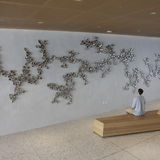
The Ineffable gardener and inherent transience, 2018

Waterbones (sequence 184) 2019

Seed syllables 2018

detail Seed syllables 2018

Waterbones, 2018

Waterbones 2017

Waterbones 2017

The Developed Seed (copper version 488), 2016

The Developed Seed (copper version 488), 2016
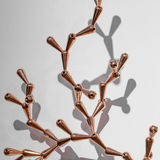
The Developed Seed (copper version 488), 2016

The developed seed (organizing a system that can continously construct itself) , 2016

Trisphere Ultrastructure (amaoeba), 2015

Trisphere Ultrastructure (heart), 2015

Trisphere Ultrastructure (heart), 2015

Germination rates on four poles, 2015

Germination rates on four poles, 2015

Hypermeasures for vertical orchestra, 2015

Hypermeasures for vertical orchestra, 2015

Waterbones (climbing wall version I), 2015

The developed seed (organizing a system that can continously construct itself), 2014

Waterbones (sponge), 2014

Waterbones (sponge), 2014

Diagram bushes Here and There and Everywhere, 2013

The Ineffable gardener and inherent transience, 2013

The Ineffable gardener and inherent transience, 2013

Aerial roots on improvised display, 2013

Aerial roots on improvised display, 2013

Loris Cecchini solo show, 2013

Sequential interactions in alfalfa chorus, 2013

It has always been here, 2013

Diagram bushes Here and There and Everywhere, 2013

Diagram bushes Here and There and Everywhere, 2013

Diagram bushes Here and There and Everywhere, 2013

Sequential interactions in alfalfa chorus, 2013

Sequential interactions in alfalfa chorus, 2013

Sequential interactions in alfalfa chorus, 2013

Waterbones, 2012

Waterbones, 2012

Sinapsis paradigms and Micrologies, 2012

Sinapsis paradigms and Micrologies, 2012

Loris Cecchini / La forma nella luce.

Loris Cecchini / La forma nella luce.

Steelorbitalcocoons I-II-III, 2011

The developed seed (organizing a system that can continously construct itself) 2011

The polychromeseedsessions (collection)

The polychromeseedsessions (collection)

The developed seed, (organizing a system that can continously construct itself) 2011

The developed seed (organizing a system that can continously construct itself) 2011
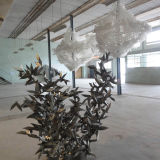
Origami occidentale II, 2011

The developed seed (organizing a system that can continously construct itself), 2011
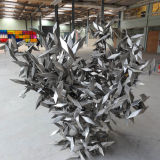
Origami occidentale II, 2011
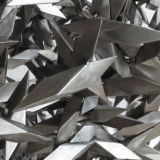
Origami occidentale II, 2011
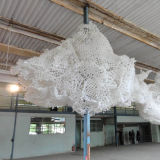
Cloudless, 2011

Cloudless, 2007

Cloudless, 2007

Cloudless, 2007

Cloudless, 2007

Cloudless, 2006

Cloudless, 2006

Cloudless, 2006

Morphing wave, 2005

Playing origami morphogenesis, 2011

Crystal Engineering in Self-Assembly Networks, 2009
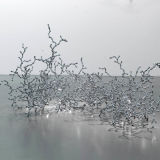
Crystal Engineering in Self-Assembly Networks, 2009
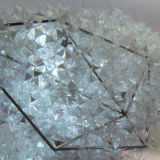
Floating Crystals (incoherent extensive formations for my deepest vibrations), 2007-2008

Cloudless, 2006

Floating Crystals (incoherent extensive formations for my deepest vibrations), 2007-2008

Pathway Exitation Phase Controls, 2007

